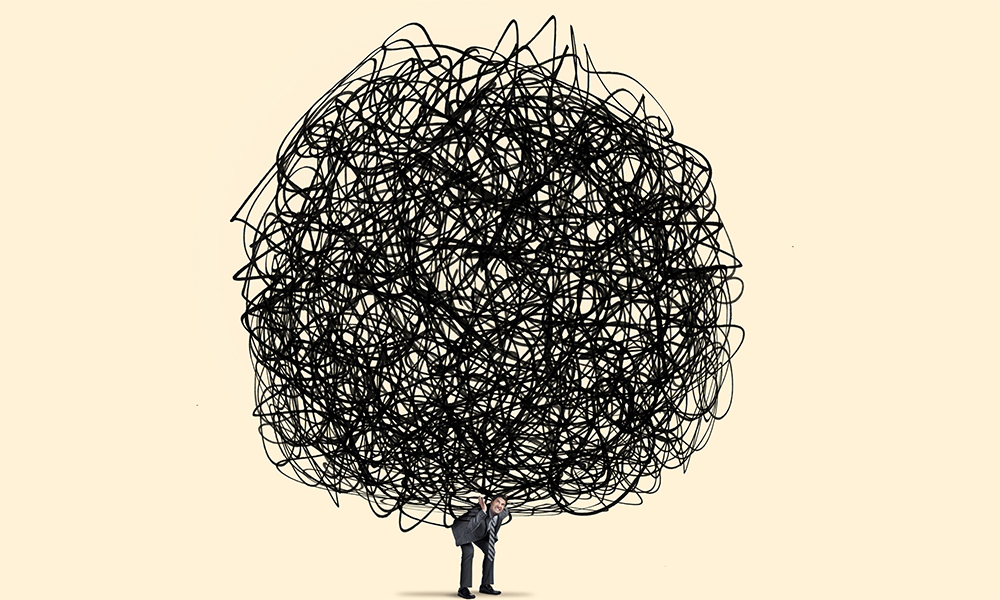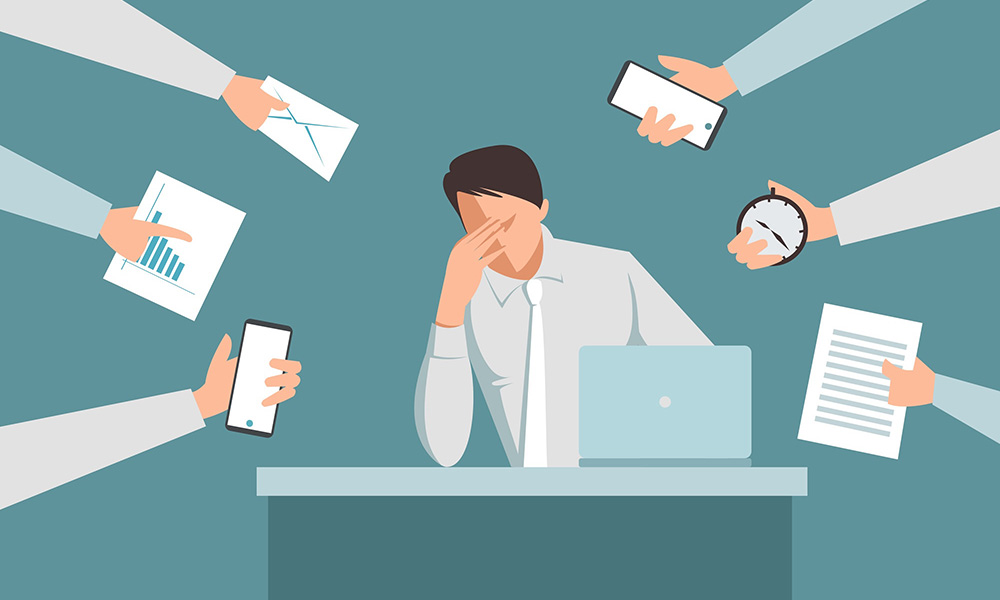Now in the third month of working remotely, many of us are realising that the WFH of our imagination is quite different from the reality. Before COVID-19, WFH was an occasional luxury that you probably enjoyed to the fullest. Maybe you worked in your pyjamas and took calls in bed, or perhaps you worked out of the nearby coffee shop. A free hour during the day allowed you to squeeze in a workout at the gym or take the kids to the park.
While some of those advantages can still be enjoyed, the pandemic has brought new challenges to WFH. For many people, this is the longest-ever stretch of working from home, without being able to meet their colleagues in person. Numerous extra responsibilities have also emerged – from home-schooling kids and caring for elderly family members, to cooking all meals and observing strict hygiene procedures. Plus, most of the usual venues for personal recreation have suddenly become unavailable, be it gyms, parks, restaurants or spas.
While managers are understandably worried about maintaining productivity, the fact is that remote workers actually put in longer hours than their counterparts in office, even without face-to-face supervision.
Experts have warned that the bigger risk right now is burnout. Recognizing these challenges, on May 22nd, Google asked employees to take a day off to address WFH related burnout.
In their Harvard Business Review article, 3 Tips to Avoid WFH Burnout, Laura Giurge and Vanessa Bohns highlight this issue:
The lines between work and non-work are blurring in new and unusual ways, and many employees who are working remotely for the first time are likely to struggle to preserve healthy boundaries between their professional and personal lives. To signal their loyalty, devotion, and productivity, they may feel they have to work all the time. Afternoons will blend with evenings; weekdays will blend with weekends, and little sense of time off will remain.
In other words, team members are always “on”, which can have a significant impact on mental wellbeing. Research shows that the change is already taking a toll. In a survey in the US, conducted six weeks into the pandemic, 45 percent of respondents said they felt burned out after working from home. Another survey puts the number at 51 percent.
So, this week, my message focuses on working from home in a way that doesn’t leave you burned out. What steps can you take to foster a better work-life balance? And what are the signs of burnout to look out for?
Amid large-scale disruptions, work has offered many of us a sense of normalcy. Even while operating remotely, familiar tasks give structure to our day: answering emails, talking with colleagues, managing projects. So, the “work” aspect of WFH has been largely positive. The problem lies in the collapse of boundaries between personal and professional. Your home, where you used to unwind and relax after work hours, has now become your full-time office.
To cope with the situation, I have tried to maintain and stick to a schedule as much as possible. Things such as weekly and daily to-do lists that were helpful in the office have also provided focus when working from home. I take an one hour break to have lunch together as a family (in fact, we suggest to all our team members to not have meetings between 1pm and 230pm). I also try and block thirty minutes on my calendar every afternoon for playtime with my eight year old.
Here are four recommendations to help avoid burnout while working remotely:
1. Create tangible boundaries between professional and personal
For the sake of your long-term wellbeing, it’s vital to create a separation between “work” and “home”. When you’re going to the office, these boundaries are automatic. Your work clothes, your morning commute, the coffee you pick up on the way in – all these send a signal to your brain and shift it into work mode. Similar rhythms at the end of the workday help you transition into leisure mode. In the absence of these rituals, you might start to feel like you’re always at work.
This is where the importance of boundaries comes in. For example, don’t start answering emails the moment you wake up, while still in bed. Complete your morning routine (meditating, working out, going for a walk, etc.), put on your work clothes, have breakfast and then sit down to work – just like you would if you were going to the office. Try not to work in the same room as where you sleep or relax. If this isn’t possible, create a “work zone” for yourself, perhaps demarcated by a screen, potted plants or a rug.
2. Switch off during personal time
When you receive a message or an email, you might feel the need to respond right away – even if you’re taking care of your kids or taking a much-needed break. Putting this kind of pressure on yourself is usually unnecessary, and can be detrimental to your mental health.
Resist the urge to continually check your devices and squeeze in responses during much-needed personal time. Instead, silence notifications and allow your brain to switch off from work. Manage the expectations of co-workers by setting an out-of-office reply at certain times of the day and on weekends, or simply let them know that you’ll be replying to all pending emails every morning/evening. Managers should also do their part by not sending work communications outside of work hours. You may not need or expect an immediate response, but your team members will feel the pressure to reply instantly. As noted in the HBR piece referenced above:
In five studies involving more than 2,000 working adults, we found that senders of after-hours work emails underestimate how compelled receivers feel to respond right away, even when such emails are not urgent.
3. Prioritise important work
Understandably, many people have the desire to “stay busy” during WFH. However, if you don’t manage your attention wisely, this can lead to working all the time – without accomplishing very much.
Instead of cluttering your entire day with immediate but not-so-vital tasks, focus your time and energy on meaningful top-priority work. Studies show that remote workers enjoy about three hours of peak productivity per day, so try to carve out this time without distractions. Minor tasks can be handled during a pre-set, low-energy window: e.g., the hour after lunch or the first half of every Friday.
4. Support your team
In a recent article on WFH, Santiago Jaramillo (CEO of Emplify) points out that employers are in a unique position to offer support to their team members. Keep in mind that there is no one-size-fits-all approach. Keeping your finger on the pulse of your team will allow you to do things that are genuinely helpful, rather than adding an unnecessary obligation. Jaramillo offers a couple of ideas:
What resources can you offer to alleviate some of the stressors at home? …. Considering new health anxieties, maybe ask a nutritionist to share the foods proven to bolster the immune system. Think about hosting a virtual meditation workshop to teach breathing techniques that ease stress.
It’s also important to know what burnout looks like, so we can recognise it – whether in ourselves, or among our team members. While stress manifests differently in different people, here are four common warning signs to look out for:
- A dip in performance. If a previously high-performing team member is suddenly arriving late for meetings, not responding to emails and delivering sub-standard output, consider it a red flag. Professional burnout can lead to apathy towards work.
- Playing the blame game. If you find yourself acting defensive or blaming other people for your mistakes, it might be time to pause and self-reflect. Extreme stress can push you into “fight or flight” mode.
- A state of exhaustion. Have you noticed a team member looking extra-tired or being uncharacteristically quiet during virtual meetings? If yes, it’s time to check-in and see how they’re doing.
- Being constantly “on”. An ability to disconnect from work can set you on the path to burnout. Signs to look out for include consistently working longer than office hours, looking at your work devices first and last thing every day, and fielding calls and emails during personal time.
There are several things you can do to support team members if they’re showing signs of burnout. Work together to come up with ways in which they can carve out meaningful time for rest and rejuvenation. Collaborate to redistribute their workload, and alter schedules to be less overwhelming. Offer frequent encouragement and recognition to lift them up, and provide extra resources to clear obstacles. If the person is open to it, you could help them reach out to a therapist.
And finally, do speak up. Don’t hide your concerns. Discuss any challenges that you are facing with your boss and colleagues. Chances are that others in the team might be feeling the same and so, an open conversation could help others as well.
I hope these suggestions can help you reduce the risk of burnout. Have you found other ways to tackle the challenges of WFH?








Comments